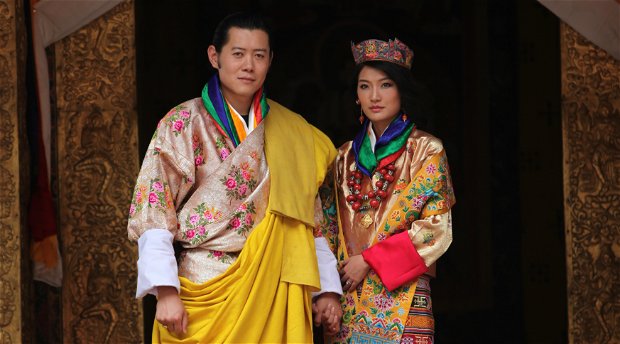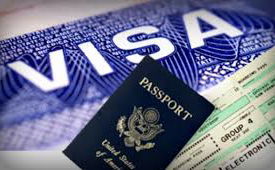Bhutan is a unique country of exceptional distinctive culture and traditions and by far the national dress called the Gho for men and Kira for women maybe the most unique and beautiful of all. A tourists’ first glimpse of the gracefully clad men and women in their Gho and Kira at the Airport sets the stage for a truly Bhutanese unique cultural experience in Bhutan.
Few Facts About Bhutan

Bhutan is a last kingdom in South Asia and the country known for Gross National Happiness as the guiding principle of development. Its culture and tradition very unique to the neighbouring country and to the world. Learn some few facts about Bhutan
Name of the Country:
- Kingdom of Bhutan
- Land of the Thunder Dragon
- Land of happiness
King of Bhutan
The 5th King His Majesty Jigme Gesar Namgyel Wangchuck
Queen of Bhutan
Her Majesty Ashi Jetsun Pema
Population of Bhutan
797,765 - Population Census 2017
Area of Bhutan
38,398 sq.km. (source – 2005 census)
Location of Bhutan
88 deg 45’ East to 92 deg 10’ East in Longitude and 26 deg 40’ North to 28’ deg 15 North in Latitude
Elevation Range of Bhutan
300 m (985 ft) to 7000 m (23,000 ft)
Time zone: 6 hours ahead of GMT
Capital city: Thimphu
Districts (Dzongkhags): 20 Dzongkhags
Language: Dzongkha
Religion: Mahayana Buddhism
Currency: Ngultrum (Nu)
Government: Democratic Constitutional Monarchy
Prime Minister: Tshering Tobgay
Opposition Leader: Dr. Pema Gyamtsho
National Game of Bhutan
Archery is the national sports of the Kingodm. Archery was declared the national sport in 1971, when Bhutan became a member of the United Nations. Since then, the popularity of Bhutanese archery has increased and popularly played during local festivals, between public ministries and departments, and between the dzongkhags and the regional teams.
Archery in Bhutan is culturally distinctive and is a way of socialization, communication, and development of relations between people
The National Emblem of Bhutan
The National Emblem, contained in a circle is composed of a double diamond thunderbolt placed above a lotus, surmounted by a jewel and framed by two dragons. The double diamond thunderbolt represents the harmony between secular and religious power. The lotus symbolizes purity and the jewel represents sovereign power. Thetwo dragons - male and female stand for the name of the country - the Land of Thunder Dragon (Druk Yul) which they proclaim with their thunder in unison.
Bhutan National Flag
The national flag of Bhutan is based upon the tradition of the Thunder Dragon of Bhutanese Mythology. The Dragon is closely associated with Bhutan.The basic design of the flag by Queen Mother ChoyingWangmoDorji dates back to 1947.The National flag is rectangle in shape that is divided into two parts diagonally. The upper yellow half signifies the secular power and authority of the king while the lower saffron-orange symbolizes the practice of religion and power of Buddhism. The dragon signifies the name and the purity of the country while the jewels in its claws stand for the wealth and perfection of the country
The National Flower of Bhutan
The national flower of Bhutan is the Himalayan Blue Poppy (Meconopsishorridula). In Bhutan, the Blue Poppy grows to a height of 1 meter on the rocky mountain terrain, above the tree line at altitudes of 3500m to 4500m. It is a delicate blue or purple tinged blossom with a white filament. The flower was discovered in 1933 by British botanist George Sherriff in remote part of Sakteng in eastern Bhutan during an expedition in the Himalayas. Interestingly Frank Ludlow of the same expedition discovered a rare butterfly called the Ludlow's Swallowtail, another icon found exclusively in Bhutan
The National Tree of Bhutan
The Himalayan Cypress (Cupressustorolusa) is the national tree of Bhutan. This tree is associated with religion, and usually found near religious structures like Dzongs and Temples in the temperate zone between altitudes of 1800m and 3500m. To the Bhutanese, its ability to survive on rugged terrain represents bravery and simplicity.
The National Bird of Bhutan
The national bird is the Raven. The symbol of the Raven head is the most prominent component of the royal crown. In Bhutan, the raven represents the deity GonpoJarodongchen, the Raven-headed Mahakala, one of the country's chief guardian deities. The Bhutanese credit the Raven with having guided the founder of BhutanZhabdrungNgawangNamgyelto victory during the invasion from U-Tsang(Tibet) in the seventeenth century.
The National Animal of Bhutan
Takin National Animal of BhutanThe national animal is the Takin (Burdorcastaxicolor). This bovid is also associated with religious history and mythology. Today it is a rare animal, and its conservation status is "vulnerable." This unique animal has the head of a sheep and body of a cow! Legend has it that this animal was conjured up by Lam DrukpaKuenley, a Buddhist Saint notoriously famous for his crude and un-conservative ways of preaching Buddhism. There is a Takin Reserve in Thimphu for those wishing to see this strange and beautiful animal.
Further Reading
The tiny Himalayan kingdom of Bhutan is located in the mighty Himalayas, between two giant countries of India in the south and China in the North. Bhutan’s rich history can be traced back to the 7th and 8th Century when Guru Padmasambhava visited Bhutan and introduced Mahayana Buddhism.
All tourists must obtain a visa clearance prior to travel to Bhutan. Visas are processed through an online system by your licensed Bhutanese tour operator, directly or through a foreign travel agent.







Share This Post